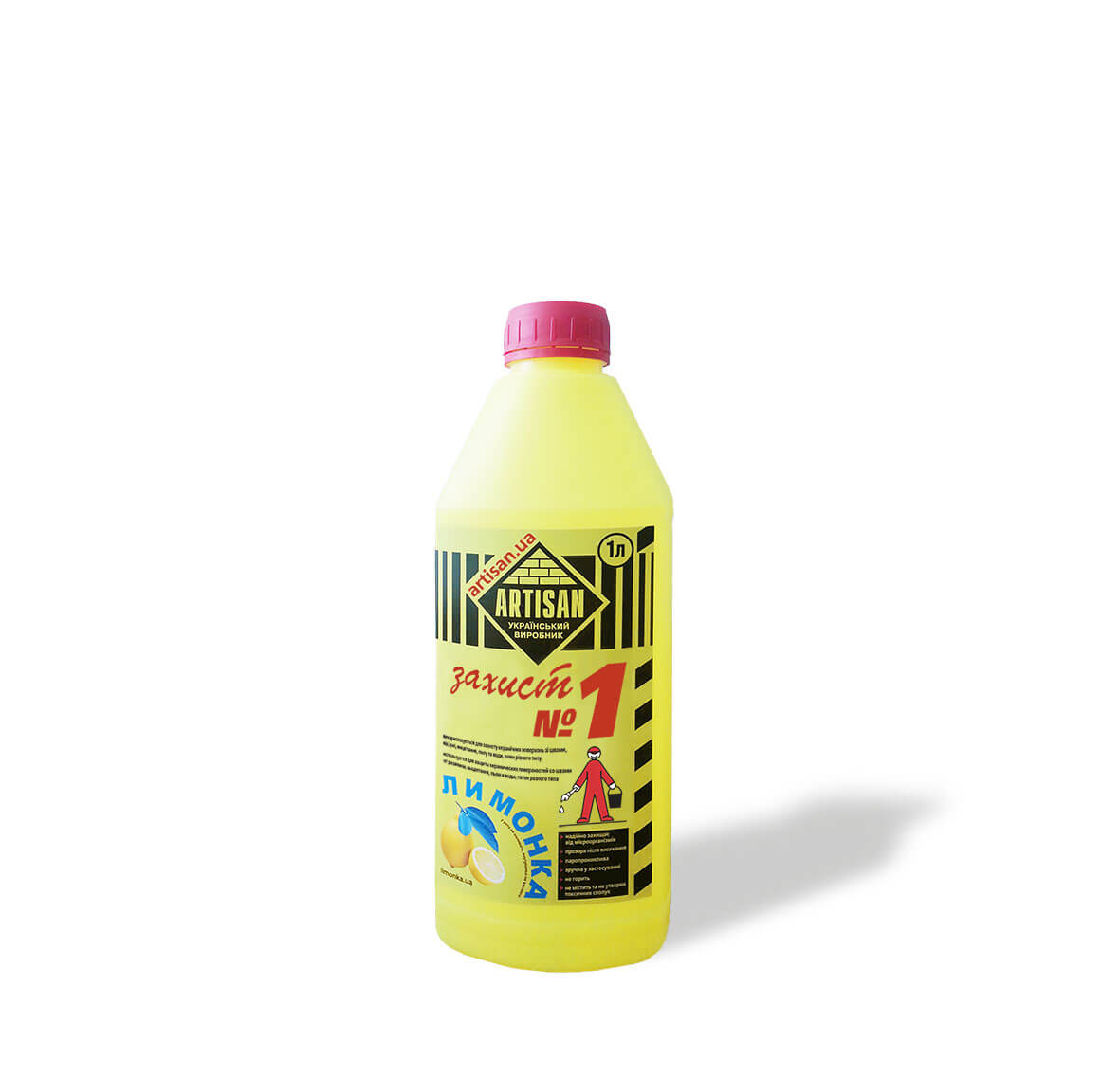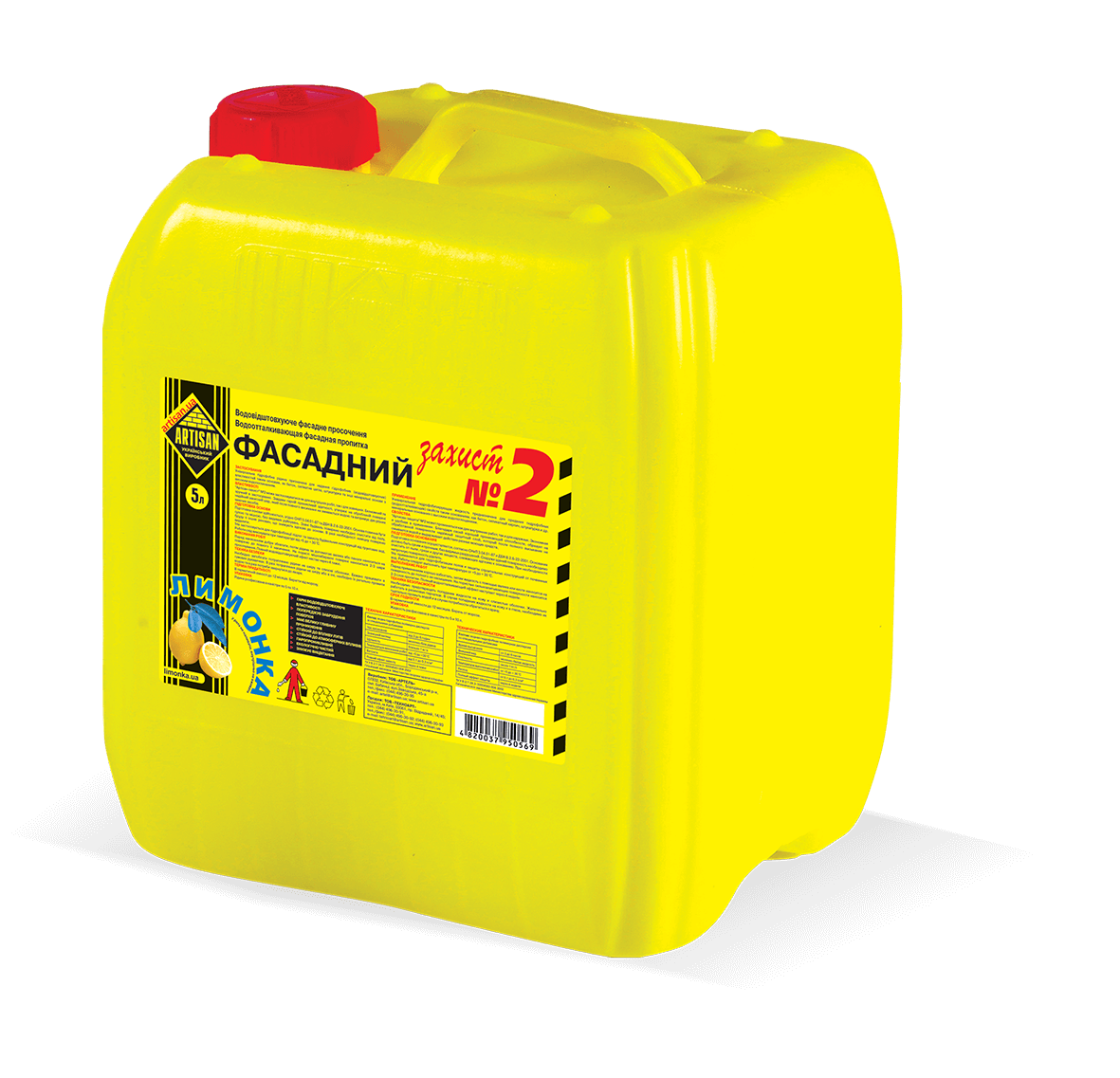
Protection for facing №1
11.11.2017
Face protection fluid №2
11.11.2017Efflorescence remover № 3
Efflorescence remover № 3 cleaning of mineral surfaces from contaminants such as lime, fading of salt deposits (efflorescence)
Efflorescence remover № 3 cleaning of mineral surfaces from contaminants such as lime, fading of salt deposits (efflorescence)
APPLICATION
Remover is used to clean mineral surfaces from various types of contaminants: lime, fading, salt deposits (efflorescence). It is applied to the material, absorbed into it by capillaries and forms a vapor-permeable, colorless, water-repellent film.
– Low molecular weight of oligomers ensures high penetrating ability;
– the structure of the molecules makes it possible to use it for building materials with a high content of alkali;
– provides a rapid manifestation of hydrophobic effect, due to which the treated surface quickly becomes resistant to the effects of atmospheric precipitation;
– increases frost resistance.
PREPARATION OF THE SURFACE
The surface must be dry. Pollution should be previously eliminated mechanically. In the presence of salts harmful to the construction, it is necessary to make a qualitative analysis of their content. Those areas that are supposed to be treated must have open pores. Surfaces that will not be treated (windows lacquered and intended for painting) must be protected. Materials sensitive to the solvent, such as insulation from polystyrene, mastic for seams, bitumen, latex, etc. do not have to contact the composition.
PERFORMANCE OF WORK
For different types of surfaces, use the table.
Shake before use. Apply the material by spraying or brushing. Application is carried out evenly and to saturation for one or more working approaches. As a rule, it is enough to process the surface of a building material twice, while the washing should be applied by the method “wet on wet”. The highest efficiency is achieved with a well-absorbent surface. Clean tools immediately after use with solvents of the 646-650 series.
All recommendations are effective at a temperature of + 20 ° C and a relative humidity of 60%.
The manufacturer is not responsible for the misuse of the material.
SAFETY PRECAUTIONS
Work should be done away from open sources of fire. Do not drink, smoke or eat while working. Mandatory use of protective glasses and gloves. In case of contact with the skin and eyes, rinse thoroughly with water and, if necessary, consult a doctor. Ensure good ventilation in enclosed spaces. Do not turn.
Keep away from open flame in accordance with fire safety regulations.
EXPIRATION DATE
In hermetically sealed packaging 24 months.
PACKAGING
Containers of 0.9 liters and 2.7 liters.
TECHNICAL CHARACTERISTICS
Composition: oligomeric siloxane with a long alkyd substituent
Density : 0.78 g / cm3
Color : slightly clear liquid
Application temperature : from 0 °С to +40 °С
Consumption:
Concrete B25 : 150-200 ml / m2
Facing bricks : 150-250 ml / m2
Dry mix plasters : 200-250 ml / m2
Lime-sand plaster : 300-600 ml / m2
Asbestos cement (slate) : 150-200 ml / m2
Cellular concrete : 300-800 ml / m2
It is recommended to make control samples to assess the flow and efficiency of the material.
TABLE
| Material | Solvent | Proportion |
| High-quality concrete, artificial stone (cement-based), ceramics, marble, asbestos cement | 646-650 | 1:1 |
| Silicate and dense facing ceramic brick, mineral plasters, mineral paints | 646-650 | 1:0,5 |
| Cellular concrete, ceramic bricks of semi-dry pressing | – | without dilution |
HIGH EFFICIENCY
UNIVERSAL
FROST-RESISTANT
ТУ У В.2.7-24.3–30554583-004-2002
Hygienic conclusion of the Ministry of Health of Ukraine.
You must be logged in to post a review.


Reviews
There are no reviews yet.